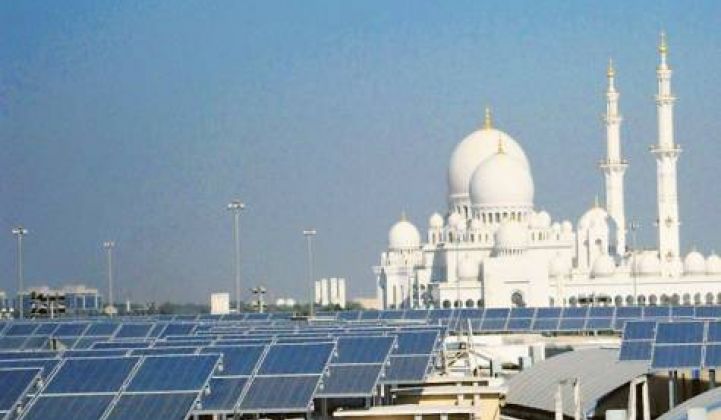Demand for electrical power across the Middle East and North Africa (MENA) region is growing due to rising population, increased urbanization, and economic growth driven by industrialization.
Demand for electricity is further driven by the fact that most MENA countries subsidize electricity prices to consumers -- so price signals do not exist to encourage energy-efficient behavior.
The practical implication of these factors is that the need for new regional electricity capacity is outpacing regional economic growth. In fact, under business-as-usual conditions, the region may require more than 120 gigawatts of new MENA power generation capacity by 2017, with an associated cost of as much as $250 billion when transmission and distribution are included.
The practice of burning of fossil fuels, particularly oil and gas, has traditionally been the basis for such new power generation capacity in the MENA region and renewable energy has received little attention as a viable alternative. The United Arab Emirates (UAE), a federation of Abu Dhabi, Dubai, Sharjah, Ajman, Umm Al Qaiwain, Ras Al Khaimah, and Fujairah, ranks as the world’s fifth largest oil exporter, providing some 2.3 million barrels per day to world markets. The country’s oil reserves are the seventh largest in the world and the UAE also ranks in the top ten of natural gas reserve-holding nations.
Despite this, there is a growing realization that energy from conventional sources -- oil and gas -- is finite and consuming these resources brings certain economic and sustainability challenges. As such, the UAE is now developing major programs to become a regional leader in advancing renewable energy, developing safe and peaceful nuclear power and promoting greater energy efficiency. Of all the renewable resources that the UAE can tap, solar energy has the greatest technical potential. In fact, a typical square kilometer of land in the MENA region receives solar energy equivalent to approximately 1.5 million barrels of crude oil annually.
So, the UAE is making an investment in the full value chain of the renewable energy and clean technology sectors.
The emirate of Abu Dhabi has established Masdar, a commercially driven company investing in and developing renewable energy and clean technology; a graduate level university focused on clean energy and sustainability; and a sustainable urban development and clean technology cluster.
Through Masdar, Abu Dhabi has deployed Shams 1, a 100-megawatt concentrating solar power plant in Abu Dhabi and the first utility-scale solar power facility in the Gulf Cooperation Council (GCC), with more stages to follow. Masdar is also preparing for construction of its second utility-scale solar project in the UAE, the 100-megawatt Nour 1 solar photovoltaic power plant. Shams 1 and Nour 1 are the first large-scale solar projects in a much larger commitment by the government of Abu Dhabi to achieve 7 percent of energy production capacity from renewables by 2020. In Dubai, plans are underway to develop a 1-gigawatt, multi-technology solar power park by 2030 that will allow the emirate to achieve 5 percent of its energy production capacity from solar in the same timeframe.
***
Dr. Griffiths is Masdar Institute’s Executive Director of Institute Initiatives and a Professor of the Practice in Chemical Engineering. He earned a PhD in chemical engineering from MIT and an MBA from the MIT Sloan School of Management.
***
For a deep and detailed dive into MENA's solar market, check out GTM Research's just-published report.



